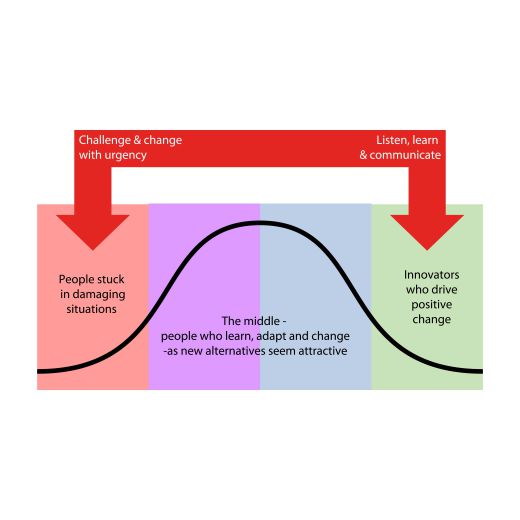In his sixth and final blog from Finland Simon Duffy reflects on the limits of personal budgets and the need to understand why things change.
Author: Simon Duffy
I am now home after my 10 week stay in Finland working with my friends at KVPS. My wife and I were treated with great kindness and the whole experience has been incredibly interesting. Mostly I have been explaining to people, professionals and politicians the advantages of personal budgets for Finland.
However I want to end my series of blogs with some broader thoughts about change in human services. Personal budgets may be part of Finland’s future, but if they are then it is important to remember the opportunities and risks that will come with them.
The most important thing to remember is that - on their own - personal budgets do no work. Personal budgets are a tool, but like any tool, they have to be used properly to bring about positive change.
Often we’ve seen government’s implement personal budgets as if the policy, on its own, will do all the work to make good things happen. But it is people who make change happen. In my work I’ve found that it is people with learning disabilities and their families who lead the way. Too often systems forget about the people who really make good things happen.
If we want to work alongside the people then it is very important that we understand that people’s willingness to change varies. In fact change starts at the edges (see figure). It is not the people who are content and happy who bring about change. It is the people who dream about something better or the people who are angry and upset that things are not right.

Figure: Innovation at the margins
If people have a vision for a better future then we must help them make that vision a reality. Often this is simply about helping people get round the barriers that are in their way. You will be amazed at how much people can do for themselves - if you let them. People and families become your pathfinders, if you watch, they show you the way.
But if people are angry and cannot see a better way then you may need to help people develop a positive vision and to help people work towards it. Often the most important thing people need is to feel that you are on the journey with them. It is not the service or the solution that is important - it is your commitment.
The other important thing to remember is that change is social. People are inspired to change and they are inspired by the stories that other people tell. This then creates a challenge. It is often the people who are pulling away from the normal, who want something different, who don’t have time to connect, to talk and to share. Sometimes they feel held back by other people’s expectations.
In my experience positive change comes about from combining these 3 rather different kinds of activities:
These three activities are in tension with each other and if we do not think about how to respect the different ways people need help then we can fail to really help move things forward.
However there are lots of good examples of how these three activities can be integrated. For example, close to KVPS there is another good organisation OmaPolku [in English - My Path]. OmaPolku is one of the best alternatives to traditional day centres I have seen and they have developed a way of working which beautifully combines these three elements:
OmaPolku is not a service - it is a launchpad - it helps people set their direction and find their place in the community.
This brings us back to personal budgets in Finland. If possible, I think organisations like OmaPolku, KVPS, Lyhty should not wait for Government to introduce personal budgets. Personal budgets can be integrated into the way in which organisations already work. This is what we did originally in Glasgow in 1996 and it is what organisations like Choice have also shown can be done.
So my final question is: Can organisations change how they work now to give people more freedom, control and the chance to show us the right way forward?
In signing off I also want to acknowledge the importance of leadership and personal commitment. My partner in all this work in Finland has been Aarne Rajalahti. It is only because Aarne has shown such determination that the idea of personal budgets is starting to become a reality in Finland. Thank you, Aarne.
And, finally, one last big thank you to everyone in Finland who has taken care of us, welcomed us into their homes and who have joined in with great conversations. Kiitos - I have tried to capture something of why I love Finland here.
The publisher is the Centre for Welfare Reform.
Personal Budgets are Just a Tool © Simon Duffy 2016.
All Rights Reserved. No part of this paper may be reproduced in any form without permission from the publisher except for the quotation of brief passages in reviews.